Thingiverse

Container Ship - MakeItFloat Challenge by TimeFramed
by Thingiverse
Last crawled date: 3 years ago
⚓ Container Ship ⚓ ‿‿‿‿‿‿‿‿‿‿‿‿
My entry into the "Science: Make It Float challenge"
The current featured photo is a float-test of a three-hull-section container ship with SIXTY rolls of pennies (8.311kg); 16 in the front section, 16 in the center section, 15 in the rear section, and 7 in the stern (for pitch balance), and 6 containers "on deck". Had to move to the tub; the ship won't fit into the cooler I was using anymore...
In theory, this design can float an unlimited number of pennies, by simply adding more Container Hull sections, each of which can easily support the weight of 13-16 rolls of pennies.
Videos
60 rolls of pennies (8.311kg) floating in 3-hull container ship — final float test; That's all the penny rolls I have, and pretty much out of time. Lesson learned: lower the center of gravity.https://www.youtube.com/watch?v=ucUdUFSFkA0
Float test of 57 rolls of pennies (7.921kg)https://www.youtube.com/watch?v=lZGa6ZLCMuU
✅ Successful float test of 47 rolls of pennies (6.531kg)https://www.youtube.com/watch?v=nlUAm5jXbFs
An early float test (one-hull-section ship) with 4 containers in the hold, each with a roll of pennies inside.https://www.youtube.com/watch?v=wgOmfVg2kX4
Adding 3rd Container Hull section / Assembly
Part1 — https://www.youtube.com/watch?v=iOW4JNv2nHk
Part2 — https://www.youtube.com/watch?v=9WbwUSZzHJY
See the Instructions for a narrative of the iterative discoveries, and design modifications that resulted.
See Updates below to see changes since first published.
This is definitely a "work in progress". Things may still change based on the ongoing printing, testing, and experimentation.
I normally don't publish my things until after I successfully print one myself and verify everything prints and works as designed. However, for this challenge, you get to "come along for the ride", and follow the progress, setbacks, redesigns, and hopefully, the ultimate success of this project. A chronicle of the process can be found in the Narrative section under the Instructions tab.
Concept
The first thing that came to mind when I read the challenge goal — to optimize the amount of weight your boat can support using coins in your local currency — was a container ship, having the containers hold rolls of pennies.
An object floats based on Archimedes' principle:
Any object, wholly or partially immersed in a fluid, is buoyed up by a force equal to the weight of the fluid displaced by the object.
— Archimedes of Syracuse
Therefore, in order for a ship to float, it must displace a volume of water that weighs more that the ship and its cargo.
So, the first thing I did was weigh a roll of pennies to determine the size that a container would need to be in order to displace a volume of water having the same weight.
The idea behind that, is that if each container itself is at least (neutrally) buoyant, then a ship's hull that would surround the containers should have enough buoyancy to float the hull and the containers in it.
That conclusion is based on the fact that the hull would displace the volume of all the containers in its hold, plus the additional volume of the space around the containers (weighing only as much as the air in it), and the thickness of the hull itself. Since the hull will be made of plastic, and not solid, the volume of water equal to the volume of just the hull itself should be enough to float the hull. i.e., If I filled the hull with water it shouldn't sink.
This would be difficult to calculate ahead of time (although, using the slicer's "filament required", and approximating the weight of that much plastic would probably be close enough. Note: I proved this to be the case experimentally once the hull was printed.
Penny rolls ranged from 127g to 133g. I looked up the weight of water — 1g/1000mm³ (it varies with temperature, and of course salt content in the ocean, neither of which should be factors for this model...). From that, I determined a "container" size -- having dimensions to surround a roll of pennies, and enough volume that the container itself should float with a roll of pennies inside. If each container is buoyant, then by definition, the ship itself should be buoyant if the containers all fit inside the hull, since the ship's total water displacement would be even greater. It should, in fact, be greater by enough to add a layer or two of containers on the deck, and still be buoyant. I didn't try to pre-compute that; I figure that will be done by simple experimentation once the ship is loaded and floating by adding containers to the deck. Of course the weight of the water displaced by the hull must be greater than the weight of the ship, and it's cargo — by enough to raise the deck of the ship high enough above the water's surface to avoid flooding the hull.
The design I came up with is modular so that
It will fit in the print volume
In theory, it is infinitely scalable by using one Bow, one Stern, and any number of Hulls/Decks (I'm hoping to print as many hulls as time permits to test that theory...).
The bow and stern make it actually look somewhat like a ship (vs. a square barge), and add some buoyancy since they are empty, which should allow for on-deck containers.
Another design goal is to only use printed parts (other than the penny rolls), without the need for gluing, and to have no parts that require support material (which, for instance, influenced the shape of the stern away from being relatively flat to be somewhat pointed (it prints on end).
Note: In the end, the bow (second version) required support material; see Narration in the Instructions about that.
The hull part is sized to fit a dozen containers (4 wide × 3 high) based the dimensions described above.
I also incorporated a keel into the hull that can hold a roll of pennies to add weight at a the lowest point to aid in lowering the center of gravity, in an effort to increase lateral stability (to prevent the ship from rolling over).
In order for form a (reasonably) water-tight seal between the modules, there is a groove running the length of the joining edge of each piece. I employed a "gasket", printed with flexible filament, that is forced into the grooves, and the modules are then clipped together using 12 clips (ABS has enough "flex" to allow them to snap into place, while being rigid enough to hold tight).
Note: The flexible filament turned out to be too rigid to form a decent seal like a rubber gasket would. I wound up using a different solution — see the Narration section in the Instructions.
Updates
Jul 19
Added videos of 57- and 60-roll float tests of 3-hull-section ship.
Jul 18
Added video of 47-roll float test of 3-hull-section container ship.
Jul 17
Added 3rd Container Hull section
Jul 15
Added 2nd Container Hull section
Floated TWENTY SIX rolls of pennies (new photos)
Jul 14
Added a "12 Container Replacement" consisting of a "grid" (print 2), and a "bar" (print 4).
Jul 13
Second float test (using plumber's putty between the hull seams) — success ✅ (new floating photo).
Deck Plate printed photos added.
New Bow printed, photos added.
Jul 11
Uploaded new, shorter, Bow, Bow_108.stl — it fits within required build volume limits. I left the original, Bow_68.stl for reference, and an option if your vertical print volume is not limited to 150mm.
Uploaded new Bridge halves, that are not as tall (as printed)/wide (as assembled)
Needed to reduce the print height to fit into the MakerBot's printable area (150mm).
Uploaded new Hull Joint Clip
Stronger (provides more pressure)
Does not interfere with the containers (is not wider than the "seam ridge".)
Uploaded new Joint Clip
It floats! (see pictures)
Of course, it leaks too...
Jul 9
Uploaded new (thinner gasket)
Jul 8
Bridge pictures
Jul 7
New (lighter) Container & Container Door)
new Penny Roll Holder (larger hole for roll, chamfered corners and slightly smaller outside dimension for easier fit into container)
new Container Door (looser fit, ridge on top for easier opening an look)
picture of completed container hull (one of hopefully 2 or more...)
Printing Progress:
☑ (1st revision) Bow
☑ New (2nd revision), shorter Bow
☑ 1st Hull
Containers (12) ☑ ☑ ☑ ☑ ☑ ☐ ☐ ☐ ☐ ☐ ☐ ☐
☑ Stern
☑ Gasket
☑ Hull Couplers (2)
☑ Hull Clips (12 per joint)
☑ Bow/Hull (12)
☑ Hull/Stern (12)
☑ Bridge
☑ Port Bridge
☑ Starboard Bridge
☑ Bridge Couplers (2)
☑ Stern Deck
☑ Crossbars
Bow Crossbar ☑
Container Hull Crossbars ☑ ☑ ☑
☑ Deck plate
☑ Re-designed container
☑ 2nd Hull
Containers (12) ☐ ☐ ☐ ☐ ☐ ☐ ☐ ☐ ☐ ☐ ☐ ☐
☑ 3rd Hull
Containers (12) ☐ ☐ ☐ ☐ ☐ ☐ ☐ ☐ ☐ ☐ ☐ ☐
☑☑ ☑ 24-container replacement penny roll holders (3)
To-do
☑ Redesign Bridge
☑ Redesign Bow
☑ Redesign container (see narration)
☑ Design "Clip" used to fasten the hull modules together
☑ Print second (container) Hull
☑ Test flotation
☑ New Container (success ✅)
☑ (original) Container only, with pennies (fail ⛔)
☑ Photos/video
☑&☒ Is ship balanced?
The new bow is lighter, and displaces less water than the original.
☑ The ship floats level when empty.
☒ When loaded with 26 rolls of pennies, the bow sinks further than the stern, since the stern has more buoyant force being applied to it due to the greater displacement than the bow.
Shifting 4 rolls from the front container section into the stern leveled the ship.
☑ Is it laterally stable, or susceptible to rolling? (I have a plan if it is unstable...)
☑ Determine how many containers can be added on-deck, and keep the deck above the waterline.
☑ Print more Hull sections (time permitting)
☑ 2nd Container Hull section
Containers ☐ ☐ ☐ ☐ ☐ ☐ ☐ ☐ ☐ ☐ ☐ ☐
☑ 3rd Container Hull section
Containers ☐ ☐ ☐ ☐ ☐ ☐ ☐ ☐ ☐ ☐ ☐ ☐
My entry into the "Science: Make It Float challenge"
The current featured photo is a float-test of a three-hull-section container ship with SIXTY rolls of pennies (8.311kg); 16 in the front section, 16 in the center section, 15 in the rear section, and 7 in the stern (for pitch balance), and 6 containers "on deck". Had to move to the tub; the ship won't fit into the cooler I was using anymore...
In theory, this design can float an unlimited number of pennies, by simply adding more Container Hull sections, each of which can easily support the weight of 13-16 rolls of pennies.
Videos
60 rolls of pennies (8.311kg) floating in 3-hull container ship — final float test; That's all the penny rolls I have, and pretty much out of time. Lesson learned: lower the center of gravity.https://www.youtube.com/watch?v=ucUdUFSFkA0
Float test of 57 rolls of pennies (7.921kg)https://www.youtube.com/watch?v=lZGa6ZLCMuU
✅ Successful float test of 47 rolls of pennies (6.531kg)https://www.youtube.com/watch?v=nlUAm5jXbFs
An early float test (one-hull-section ship) with 4 containers in the hold, each with a roll of pennies inside.https://www.youtube.com/watch?v=wgOmfVg2kX4
Adding 3rd Container Hull section / Assembly
Part1 — https://www.youtube.com/watch?v=iOW4JNv2nHk
Part2 — https://www.youtube.com/watch?v=9WbwUSZzHJY
See the Instructions for a narrative of the iterative discoveries, and design modifications that resulted.
See Updates below to see changes since first published.
This is definitely a "work in progress". Things may still change based on the ongoing printing, testing, and experimentation.
I normally don't publish my things until after I successfully print one myself and verify everything prints and works as designed. However, for this challenge, you get to "come along for the ride", and follow the progress, setbacks, redesigns, and hopefully, the ultimate success of this project. A chronicle of the process can be found in the Narrative section under the Instructions tab.
Concept
The first thing that came to mind when I read the challenge goal — to optimize the amount of weight your boat can support using coins in your local currency — was a container ship, having the containers hold rolls of pennies.
An object floats based on Archimedes' principle:
Any object, wholly or partially immersed in a fluid, is buoyed up by a force equal to the weight of the fluid displaced by the object.
— Archimedes of Syracuse
Therefore, in order for a ship to float, it must displace a volume of water that weighs more that the ship and its cargo.
So, the first thing I did was weigh a roll of pennies to determine the size that a container would need to be in order to displace a volume of water having the same weight.
The idea behind that, is that if each container itself is at least (neutrally) buoyant, then a ship's hull that would surround the containers should have enough buoyancy to float the hull and the containers in it.
That conclusion is based on the fact that the hull would displace the volume of all the containers in its hold, plus the additional volume of the space around the containers (weighing only as much as the air in it), and the thickness of the hull itself. Since the hull will be made of plastic, and not solid, the volume of water equal to the volume of just the hull itself should be enough to float the hull. i.e., If I filled the hull with water it shouldn't sink.
This would be difficult to calculate ahead of time (although, using the slicer's "filament required", and approximating the weight of that much plastic would probably be close enough. Note: I proved this to be the case experimentally once the hull was printed.
Penny rolls ranged from 127g to 133g. I looked up the weight of water — 1g/1000mm³ (it varies with temperature, and of course salt content in the ocean, neither of which should be factors for this model...). From that, I determined a "container" size -- having dimensions to surround a roll of pennies, and enough volume that the container itself should float with a roll of pennies inside. If each container is buoyant, then by definition, the ship itself should be buoyant if the containers all fit inside the hull, since the ship's total water displacement would be even greater. It should, in fact, be greater by enough to add a layer or two of containers on the deck, and still be buoyant. I didn't try to pre-compute that; I figure that will be done by simple experimentation once the ship is loaded and floating by adding containers to the deck. Of course the weight of the water displaced by the hull must be greater than the weight of the ship, and it's cargo — by enough to raise the deck of the ship high enough above the water's surface to avoid flooding the hull.
The design I came up with is modular so that
It will fit in the print volume
In theory, it is infinitely scalable by using one Bow, one Stern, and any number of Hulls/Decks (I'm hoping to print as many hulls as time permits to test that theory...).
The bow and stern make it actually look somewhat like a ship (vs. a square barge), and add some buoyancy since they are empty, which should allow for on-deck containers.
Another design goal is to only use printed parts (other than the penny rolls), without the need for gluing, and to have no parts that require support material (which, for instance, influenced the shape of the stern away from being relatively flat to be somewhat pointed (it prints on end).
Note: In the end, the bow (second version) required support material; see Narration in the Instructions about that.
The hull part is sized to fit a dozen containers (4 wide × 3 high) based the dimensions described above.
I also incorporated a keel into the hull that can hold a roll of pennies to add weight at a the lowest point to aid in lowering the center of gravity, in an effort to increase lateral stability (to prevent the ship from rolling over).
In order for form a (reasonably) water-tight seal between the modules, there is a groove running the length of the joining edge of each piece. I employed a "gasket", printed with flexible filament, that is forced into the grooves, and the modules are then clipped together using 12 clips (ABS has enough "flex" to allow them to snap into place, while being rigid enough to hold tight).
Note: The flexible filament turned out to be too rigid to form a decent seal like a rubber gasket would. I wound up using a different solution — see the Narration section in the Instructions.
Updates
Jul 19
Added videos of 57- and 60-roll float tests of 3-hull-section ship.
Jul 18
Added video of 47-roll float test of 3-hull-section container ship.
Jul 17
Added 3rd Container Hull section
Jul 15
Added 2nd Container Hull section
Floated TWENTY SIX rolls of pennies (new photos)
Jul 14
Added a "12 Container Replacement" consisting of a "grid" (print 2), and a "bar" (print 4).
Jul 13
Second float test (using plumber's putty between the hull seams) — success ✅ (new floating photo).
Deck Plate printed photos added.
New Bow printed, photos added.
Jul 11
Uploaded new, shorter, Bow, Bow_108.stl — it fits within required build volume limits. I left the original, Bow_68.stl for reference, and an option if your vertical print volume is not limited to 150mm.
Uploaded new Bridge halves, that are not as tall (as printed)/wide (as assembled)
Needed to reduce the print height to fit into the MakerBot's printable area (150mm).
Uploaded new Hull Joint Clip
Stronger (provides more pressure)
Does not interfere with the containers (is not wider than the "seam ridge".)
Uploaded new Joint Clip
It floats! (see pictures)
Of course, it leaks too...
Jul 9
Uploaded new (thinner gasket)
Jul 8
Bridge pictures
Jul 7
New (lighter) Container & Container Door)
new Penny Roll Holder (larger hole for roll, chamfered corners and slightly smaller outside dimension for easier fit into container)
new Container Door (looser fit, ridge on top for easier opening an look)
picture of completed container hull (one of hopefully 2 or more...)
Printing Progress:
☑ (1st revision) Bow
☑ New (2nd revision), shorter Bow
☑ 1st Hull
Containers (12) ☑ ☑ ☑ ☑ ☑ ☐ ☐ ☐ ☐ ☐ ☐ ☐
☑ Stern
☑ Gasket
☑ Hull Couplers (2)
☑ Hull Clips (12 per joint)
☑ Bow/Hull (12)
☑ Hull/Stern (12)
☑ Bridge
☑ Port Bridge
☑ Starboard Bridge
☑ Bridge Couplers (2)
☑ Stern Deck
☑ Crossbars
Bow Crossbar ☑
Container Hull Crossbars ☑ ☑ ☑
☑ Deck plate
☑ Re-designed container
☑ 2nd Hull
Containers (12) ☐ ☐ ☐ ☐ ☐ ☐ ☐ ☐ ☐ ☐ ☐ ☐
☑ 3rd Hull
Containers (12) ☐ ☐ ☐ ☐ ☐ ☐ ☐ ☐ ☐ ☐ ☐ ☐
☑☑ ☑ 24-container replacement penny roll holders (3)
To-do
☑ Redesign Bridge
☑ Redesign Bow
☑ Redesign container (see narration)
☑ Design "Clip" used to fasten the hull modules together
☑ Print second (container) Hull
☑ Test flotation
☑ New Container (success ✅)
☑ (original) Container only, with pennies (fail ⛔)
☑ Photos/video
☑&☒ Is ship balanced?
The new bow is lighter, and displaces less water than the original.
☑ The ship floats level when empty.
☒ When loaded with 26 rolls of pennies, the bow sinks further than the stern, since the stern has more buoyant force being applied to it due to the greater displacement than the bow.
Shifting 4 rolls from the front container section into the stern leveled the ship.
☑ Is it laterally stable, or susceptible to rolling? (I have a plan if it is unstable...)
☑ Determine how many containers can be added on-deck, and keep the deck above the waterline.
☑ Print more Hull sections (time permitting)
☑ 2nd Container Hull section
Containers ☐ ☐ ☐ ☐ ☐ ☐ ☐ ☐ ☐ ☐ ☐ ☐
☑ 3rd Container Hull section
Containers ☐ ☐ ☐ ☐ ☐ ☐ ☐ ☐ ☐ ☐ ☐ ☐
Similar models
3dwarehouse
free

hull
...hull
3dwarehouse
bow+stern=hull #bow #hull #stern
thingiverse
free

Sea-Ghost Stern-Open by rovingmind
...en" for the front section that matches this.
edit b, angled the bottom of the deck support - as requested for printing flat.
grabcad
free

Modular HDPE Pontoon Hull
...modular hdpe pontoon hull
grabcad
bow and stern pontoon sections for modular hdpe pontoon hulls
3dwarehouse
free

independence of the seas (full)
...nchors #boat #boats #bow #bronze #cargo #city #deck #floats #glass #gold #hull #metal #propellers #sea #ship #sky #stern #texture
3dwarehouse
free

Detailed ships hull with texture
...ains over 4000 faces and includes a template texture with deck, side and stern textures already mapped. #boat #hull #ship #vessel
3dwarehouse
free

Ship's bow
... bow
3dwarehouse
parabolic curves forms this ship's bow. hull cross section is a triangle. #boat #bow #hull #parabolic #ship
3dwarehouse
free

titanic ship wreck
...eck by deck in half then ruined the deck to make it look damaged hope you enjoy :) #1912 #bow #chevin #dead #ship #stern #titanic
thingiverse
free

A Typical Kayak (COMPLETE WITH PADDLES!) by SouthGeometric
...ake the density of the boat lower than the density of the water.
of course the usa sticker helps it float too! greatness rises!
thingiverse
free

Mariner Ship Hull (v1) by Myanc
...so if printed it does float.
when printing check your wall thickness (along with the usual settings).
re-scale to desirable size.
3dwarehouse
free

BARKENTINE JAMES TAYLOR
...barkentine james taylor
3dwarehouse
planked deck new deck house stern and bow rail
Makeitfloat
thingiverse
free

MakeItFloat yourself! by Horstage
...oat can support using coins in your local currency.
for more information seehttps://www.thingiverse.com/challenges/makeitfloat/
thingiverse
free

Concept Boat #MakeItFloat by danbdaj
...hingiverse
this is designed for 3d print without supports and rafts.
concept design inspired in some jet fighters.
makeitfloat
thingiverse
free

Boat2015#MakeItFloat by ben2015
...boat2015#makeitfloat by ben2015
thingiverse
boat with two positions standby and ready to float
thingiverse
free

Mr Q. Amphibian CarBoat. #MakeItFloat by MyMicrofactory
...mr q. amphibian carboat. #makeitfloat by mymicrofactory
thingiverse
work on progress. coming soon...
makeitfloat
thingiverse
free

Floating Koozie #MakeItFloat by JOSHUASCHWARTZ
...floating koozie #makeitfloat by joshuaschwartz
thingiverse
for those who like to have a drink in the pool.
thingiverse
free

Klein ship #MakeItFloat by obossio
...klein ship #makeitfloat by obossio
thingiverse
a nice little boat mixed with a klein bottle
thingiverse
free

Little boat #MakeItFloat by obossio
...little boat #makeitfloat by obossio
thingiverse
a nice boat that i design to mix it with the klein bottle
thingiverse
free

House Boat #MakeItFloat by cfrary
...house boat #makeitfloat by cfrary
thingiverse
a house boat that prints in two parts, the house and the floating platform.
thingiverse
free

MakeitFloat rubber duck by fmotta
...makeitfloat rubber duck by fmotta
thingiverse
i hacked the duck (see remix) and added an opening to make it boat-like.
thingiverse
free
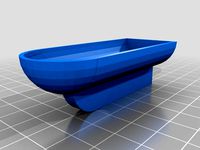
quarter boat 1 #MakeItFloat by cfrary
...quarter boat 1 #makeitfloat by cfrary
thingiverse
a quarter transport boat, early model.
Timeframed
3d_export
$74

Tips About medical equipment loans You Can Use Today
...n-men and women and loans for dentists. the amount you can get by way of these loans might vary even they have got the base of .
thingiverse
free

Assembly "L" cube by TimeFramed
...be by timeframed
thingiverse
while constructing an enclosure for my prusa i3, i found i needed a variant of my assembly cube...
thingiverse
free

60mm Fan Grille by TimeFramed
...after accidentally touching the fan while it was running, and breaking one of the fins, i figured i should have a grille cover...
thingiverse
free

Balance packet box by TimeFramed
...d
thingiverse
i made it to carry my avisae balance packets.
i'm sure it would be useful for anything else of similar size.
thingiverse
free

Gyro cube gimbal by TimeFramed
... by a failed miniature print of my big thick gyro cube (see orange photo), i designed a gimbal based on the gyro cube components.
thingiverse
free

Balance™ packet container by TimeFramed
...sier to open/close than my original design, and the lid remains attached (no lose parts).
printed with makerseries petg filament.
thingiverse
free

Knob for Prusa i3 display (for MakerFarm) by TimeFramed
...for makerfarm) by timeframed
thingiverse
the lcd display has a turn-and-push shaft to control it; i wanted a nice knob for it...
thingiverse
free

Filament Guide by TimeFramed
.../b006kt1b80/ref=oh_details_o00_s00_i00?ie=utf8&psc=1 ), and then slide over a piece of standard 1/2" electrical conduit.
thingiverse
free

TimeFrame - A time portal to put on your desk. by cubic-print
...ttp://www.youtube.com/watch?v=llgywkkifci
get a kit from our webshop (shipment from germany):http://www.cubic-print.com/timeframe
thingiverse
free

Hiking pole basket by TimeFramed
...... as usual, i turned to my 3d printer.
for these, i used pctpe filament; a perfect material — flexible, but reasonably stiff.
Challenge
turbosquid
$120
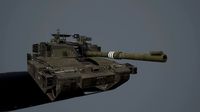
Challenger 2 and challenger 2 TES
...e 3d model challenger 2 and challenger 2 tes for download as on turbosquid: 3d models for games, architecture, videos. (1430319)
3d_export
$59
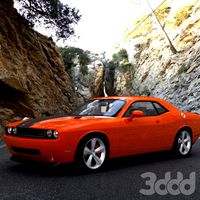
dodge challenger srt8
...dodge challenger srt8
3dexport
dodge challenger srt8
3d_export
$20
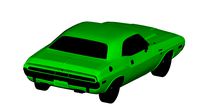
dodge challenger 1970
...dodge challenger 1970
3dexport
dodge challenger 1970
3d_export
$15
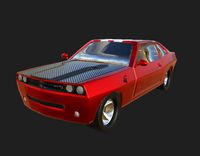
Dodge Challenger Hellcat
...dodge challenger hellcat
3dexport
dodge challenger hellcat
turbosquid
$80

challenger-2
...rbosquid
royalty free 3d model challenger-2 for download as on turbosquid: 3d models for games, architecture, videos. (1498848)
3d_export
$5
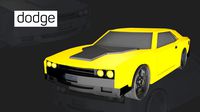
dodge challenger car
...dodge challenger car
3dexport
3d model dodge challenger!
turbosquid
$99
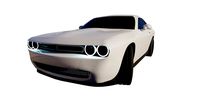
Dodge Challenger
...
royalty free 3d model dodge challenger for download as blend on turbosquid: 3d models for games, architecture, videos. (1489358)
turbosquid
$49
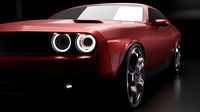
Dodge Challenger
...
royalty free 3d model dodge challenger for download as blend on turbosquid: 3d models for games, architecture, videos. (1698375)
turbosquid
$10
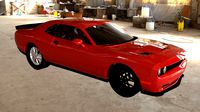
dodge challenger
...
royalty free 3d model dodge challenger for download as blend on turbosquid: 3d models for games, architecture, videos. (1405948)
3d_export
free

dodge challenger srt8
...dodge challenger srt8
3dexport
dodge challenger srt8 free model
Ship
3d_export
$5
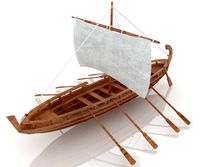
ship
...ship
3dexport
ship
3d_export
$5

Ship
...ship
3dexport
ship
archibase_planet
free
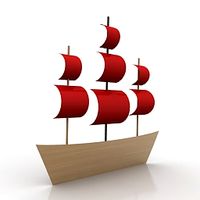
Ship
...ship
archibase planet
ship
ship n280909 - 3d model (*.gsm+*.3ds) for 3d visualization.
3d_export
$5
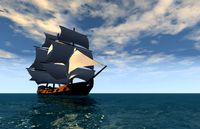
ship
...ship
3dexport
the ship is well suited for games.
3d_export
free
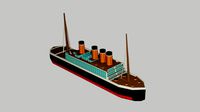
ship
...ship
3dexport
a lowpoly ship similar to the titanic...
archibase_planet
free

Ship
...ship
archibase planet
cruiser cruise ship
cruise ship n010807 - 3d model for interior 3d visualization.
archibase_planet
free
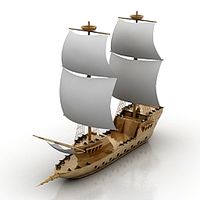
Ship
...ship
archibase planet
sailing vessel ship
ship n140110 - 3d model (*.gsm+*.3ds) for interior 3d visualization.
archibase_planet
free
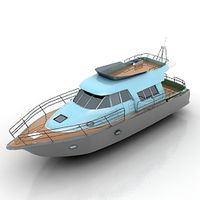
Ship
...ship
archibase planet
cutter launch ship
ship n010710 - 3d model (*.gsm+*.3ds) for exterior 3d visualization.
archibase_planet
free

Ship
...ship
archibase planet
sailing vessel ship vehicle of the sea
ship n010708 - 3d model (*.gsm+*.3ds) for interior 3d visualization.
turbosquid
$15

ship destroyer
...ip,frigate ship,ship,corvette ship for download as ma and fbx on turbosquid: 3d models for games, architecture, videos. (1435217)
Container
3d_export
$5
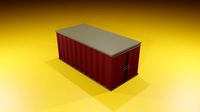
container
...container
3dexport
3d model of a commercial container, cargo container, container
3d_ocean
$15
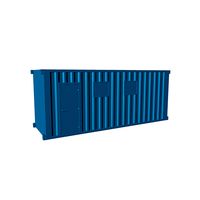
container
...container
3docean
container
create container in maya
archibase_planet
free

Container
...ontainer freight container transport container
container shipping n290612 - 3d model (*.gsm+*.3ds) for exterior 3d visualization.
3d_export
$5
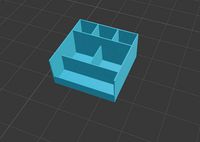
container
...container
3dexport
container
archibase_planet
free
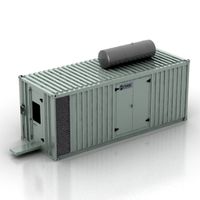
Container
...
archibase planet
container shipping container
container industry n250114 - 3d model (*.gsm+*.3ds) for exterior 3d visualization.
3d_ocean
$7
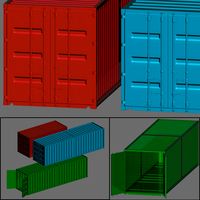
Container
...te industrial iso container ocean ocean transport container port ship shipment shipping transport truck vessel
detailed container
archibase_planet
free
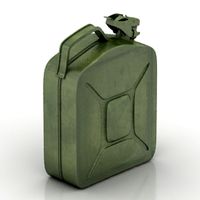
Container
...errycan container jerry can jerrican fuel container
container gas n250815 - 3d model (*.gsm+*.3ds) for interior 3d visualization.
3d_ocean
$5

Containers
...containers
3docean
barrel black blue bottle container jerrycan
2 containers of hight quolity. renderer in mentalray
archibase_planet
free

Container
...container
archibase planet
container kitchen ware
container - 3d model (*.gsm+*.3ds) for interior 3d visualization.
archibase_planet
free

Container
...container
archibase planet
container dustbin
container n180209 - 3d model (*.gsm+*.3ds) for interior 3d visualization.
